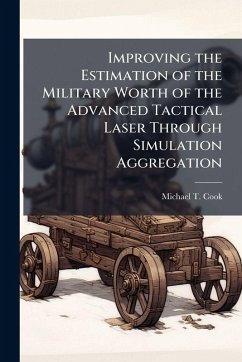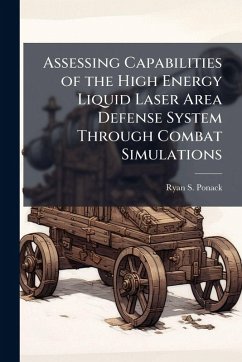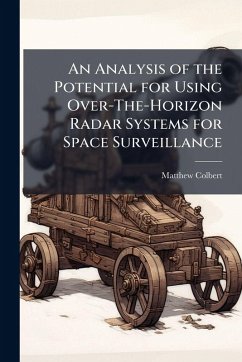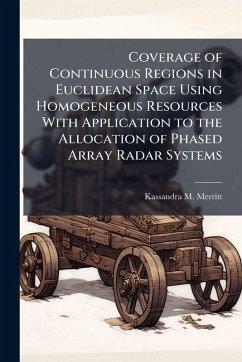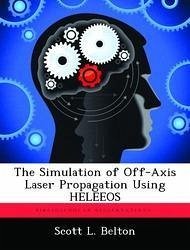
The Simulation of Off-Axis Laser Propagation Using HELEEOS
Versandkostenfrei!
Versandfertig in über 4 Wochen
15,99 €
inkl. MwSt.

PAYBACK Punkte
8 °P sammeln!
Emerging technology high energy laser (HEL) weapon systems create a myriad of new threats to safety as well as security. One of the primary causes of these concerns is off-axis laser propagation caused by ever-present particulate and molecular scattering media in the atmosphere. The scatter from these aerosols and molecules can redirect some of the HEL's concentrated energy towards unintended targets such as the eyes of pilots, friendly fighters on the surface, or innocent bystanders. Of particular interest to the laser intelligence (LASINT) community is the possibility that off-axis irradianc...
Emerging technology high energy laser (HEL) weapon systems create a myriad of new threats to safety as well as security. One of the primary causes of these concerns is off-axis laser propagation caused by ever-present particulate and molecular scattering media in the atmosphere. The scatter from these aerosols and molecules can redirect some of the HEL's concentrated energy towards unintended targets such as the eyes of pilots, friendly fighters on the surface, or innocent bystanders. Of particular interest to the laser intelligence (LASINT) community is the possibility that off-axis irradiance from HEL weapon systems could be covertly measured with enough accuracy to provide critical information about HEL weight-power relationships, beam characteristics, and target intelligence information. The purpose of this research is to quantify how much offaxis propagation may occur in specific directions given a set of simulated HEL engagement scenarios involving different HEL characteristics, geometries, and atmospheric conditions. Further simulations assess the amount of information that can be derived about HEL platform characteristics and intended target from remotely measured off-axis intensity via inversion techniques. The High Energy Laser End-to End Operational Simulation (HELEEOS) software package is used to exploit its fast-running scaling law propagation methods and its robust probabilistic atmospheric database. This work has been selected by scholars as being culturally important, and is part of the knowledge base of civilization as we know it. This work was reproduced from the original artifact, and remains as true to the original work as possible. Therefore, you will see the original copyright references, library stamps (as most of these works have been housed in our most important libraries around the world), and other notations in the work. This work is in the public domain in the United States of America, and possibly other nations. Within the United States, you may freely copy and distribute this work, as no entity (individual or corporate) has a copyright on the body of the work. As a reproduction of a historical artifact, this work may contain missing or blurred pages, poor pictures, errant marks, etc. Scholars believe, and we concur, that this work is important enough to be preserved, reproduced, and made generally available to the public. We appreciate your support of the preservation process, and thank you for being an important part of keeping this knowledge alive and relevant.



